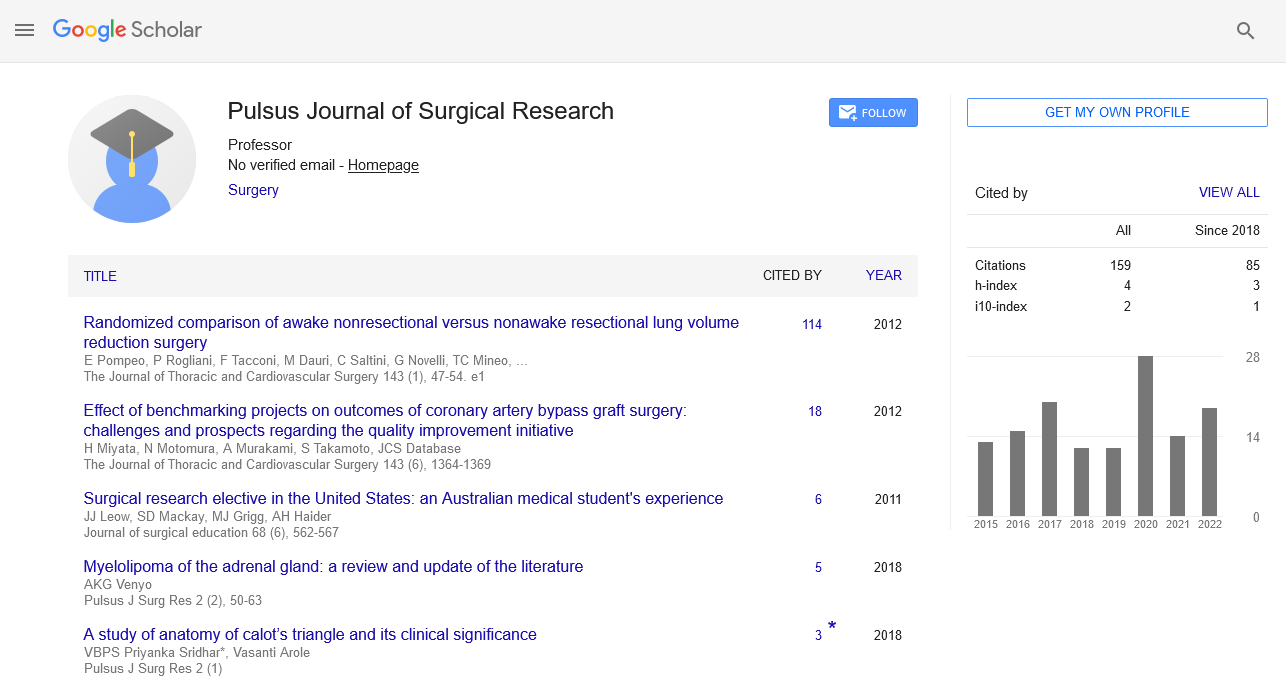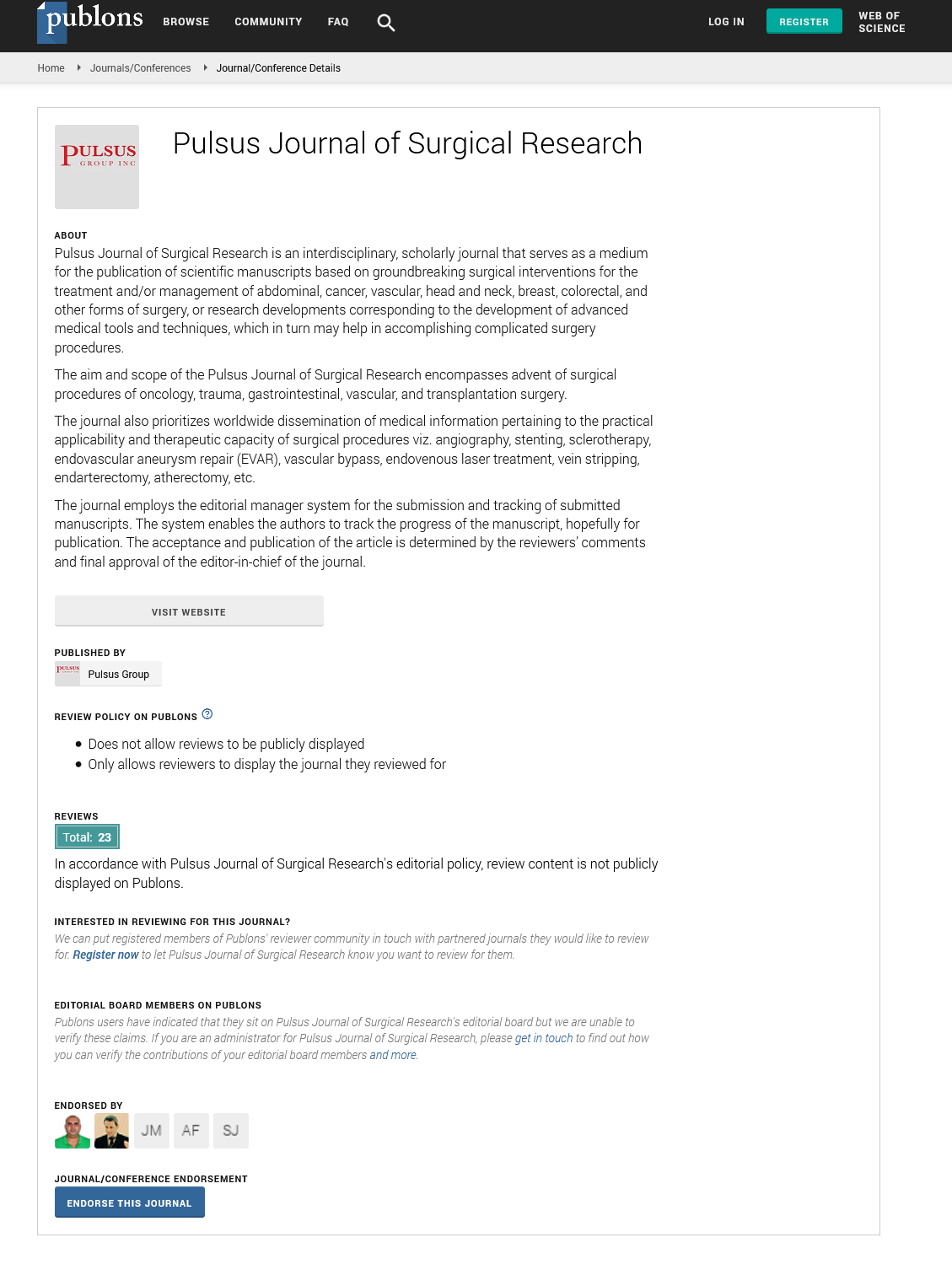Oral and Maxillofacial Surgeries for Patients with Cleft Lip and/or Palate
Received: 05-Sep-2017 Accepted Date: Sep 06, 2017; Published: 12-Sep-2017
This open-access article is distributed under the terms of the Creative Commons Attribution Non-Commercial License (CC BY-NC) (http://creativecommons.org/licenses/by-nc/4.0/), which permits reuse, distribution and reproduction of the article, provided that the original work is properly cited and the reuse is restricted to noncommercial purposes. For commercial reuse, contact reprints@pulsus.com
Abstract
Cleft lip and/or palate (CL/P) are birth defects that affect especially the buccal cavity. The estimated prevalence of CL/P is of approximately 1 per 700 live births. Therefore, they represent the most common craniofacial malformations in humans [1].
With respect to the causes of CL/P, a complex multifactorial etiology that results from interaction between various genetic and environmental factors has been described in the literature [1,2].
Cleft lip and/or palate (CL/P) are birth defects that affect especially the buccal cavity. The estimated prevalence of CL/P is of approximately 1 per 700 live births. Therefore, they represent the most common craniofacial malformations in humans [1].
With respect to the causes of CL/P, a complex multifactorial etiology that results from interaction between various genetic and environmental factors has been described in the literature [1,2].
Such malformations, moreover, are associated with several disorders including a higher frequency of dental anomalies [3], alterations in gastrointestinal microbiota [4] and immunomodulation [5], and hipernasality [6].
Another major point is that anatomic deformities resulting from CL/P are frequently observed involving the lip, alveolar ridge and palate. Consequently, treatment of CL/P often requires several surgeries [7]. In this sense, oral and maxillofacial surgeries may be very relevant. Thereby, both alveolar grafting and orthognathic surgeries deserve highlight.
It should be noted that alveolar grafting can be performed with use of autogenous bone from iliac crest or with biomaterial. Recombinant human bone morphogenetic protein type-2 is a biomaterial, which has been used with success for bone formation induced in the cleft area. Furthermore, the use of this biomaterial presents several advantages in comparison with the autogenous bone [8-11].
In turn, orthognathic surgeries (performed in patients with CL/P) are generally required to correct sagittal and transverse maxillomandibular discrepancies. Such procedures are indicated in patients with moderate to severe maxillary deficiency after growth [12,13].
It is also important to point out that these discrepancies are usually caused by the maxilla growth inhibition, due to the detrimental effects of the primary reconstructive plastic surgeries (cheiloplasty and palatoplasty). Therefore, the presence of orofacial characteristics such as hypoplastic maxilla, concaved mid-face and deformed dental arch can be mainly observed after plastic surgeries in patients with complete cleft lip and palate [14].
In view of that, maxillary advancement surgery or combined maxillary advancement and mandibular retroposition [12], as well as surgically assisted rapid maxillary expansion [13] are, in many cases, essential for effective treatment of CL/P.
Within this context, it should still be remembered that in patients with alveolar bone defects, the teeth extraction adjacent to the cleft area (in the cleft segment) requires the use of special anesthetic technique. This can be explained by the fact that there may be several anatomic variations in nerve courses in the cleft areas, since these courses are embryologically determined by the presence of the clefts [15].
In conclusi`on, it is important for oral surgeons to know about the peculiarities of the oral and maxillofacial surgeries for patients with CL/P. In addition, these surgical procedures, undoubtedly, are indispensable for complete rehabilitation of many of these patients.
REFERENCES
- Tovani-Palone MR, Saldias-Vargas VP. Factores genéticos y fisuras orofaciales no sindrómicas. Rev Fac Med 2016;64:381-383.
- Palone MRT, Silva TR, Vargas VPS, et al. A relação do gene IRF6 com a ocorrência de fissura labiopalatina. Rev Fac Ciênc Méd Sorocaba 2015;17:107-108.
- Saldias-Vargas VP, Tovani-Palone MR, Moura-Martins AP, et al. Enamel defects in permanent first molars and incisors in individuals with cleft lip and/or palate. Rev Fac Med 2014;62:515-519.
- Tovani Palone MR, Saldias Vargas VP. Las fisuras labiopalatinas frente al equilibrio de la microbiota gastrointestinal. Salud Cienc 2014;20:875-877.
- Palone MRT, Silva TR, Vieira NA, et al. Influência da composição da microbiota gastrintestinal na imunomodulação de indivíduos com fissura labiopalatina. NBC - Periódico Científico do Núcleo de Biociências 2013;3:108-109.
- Tovani-Palone MR. Fonoaudiologia e fissuras labiopalatinas. Rev Fac Med 2015;63:741-742.
- Trindade IEK, Silva Filho OG. Fissuras Labiopalatinas: uma abordagem interdisciplinar. São Paulo: Livraria Santos 2007.
- Palone MRT, Silva TR, Dalben GS. A Bioengenharia tecidual em favor da reabilitação de indivíduos com fissura labiopalatina. Medicina (Ribeirão Preto) 2015;48:113-118.
- Palone MRT. O uso de proteína BMP-2 na reabilitação de indivíduos com fissura labiopalatina. Nanocell News 2014;1.
- Palone MRT, Vargas VPS. Biotecnología versus rehabilitación de las fisuras labiopaltinas en Brasil. Rev Fac Ciênc Méd Sorocaba 2015;17:170-171.
- Palone MRT. Nanotechnology, dentistry and clefts of the lip and palate. West Indian Med J 2015;436. [Epub ahead of print]
- Freitas JAS, Garib DG, Trindade-Suedam IK, et al. Rehabilitative treatment of cleft lip and palate: experience of the Hospital for Rehabilitation of Craniofacial Anomalies-USP (HRAC-USP)-part 3: Oral and Maxillofacial Surgery. J Appl Oral Sci 2012;20:673-679.
- Tovani-Palone MR, Beja GBSP, Perez-Faverani L, et al. Expansão rápida da maxila assistida cirurgicamente no tratamento reabilitador das fissuras bilaterais completas de lábio e palato: particularidades técnicas. Rev Fac Med 2017;65:157- 160.
- Shi B, Losee JE. The impact of cleft lip and palate repair on maxillofacial growth. Int J Oral Sci 2015;7:14-17.
- Trindade Suedam IK, Gaia BF, Cheng CK, et al. Cleft lip and palate: recommendations for dental anesthetic procedure based on anatomic evidences. J Appl Oral Sci 2012;20:122–127.






